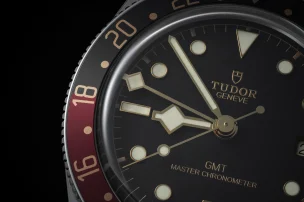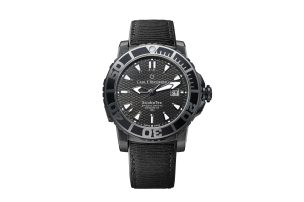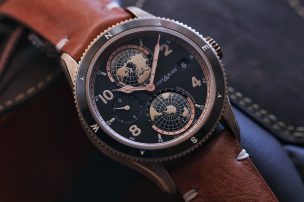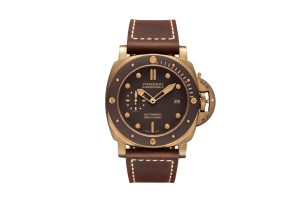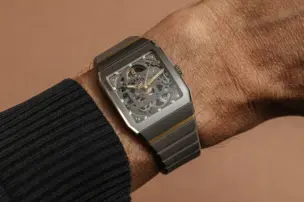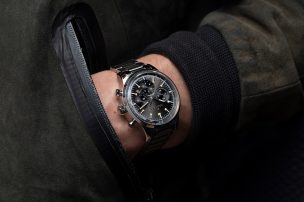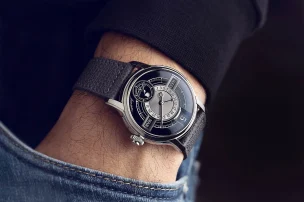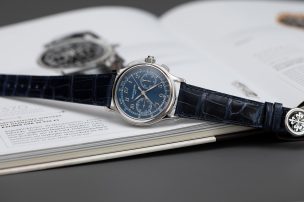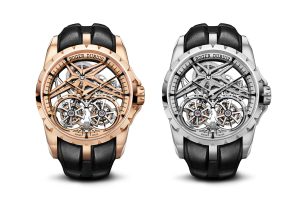
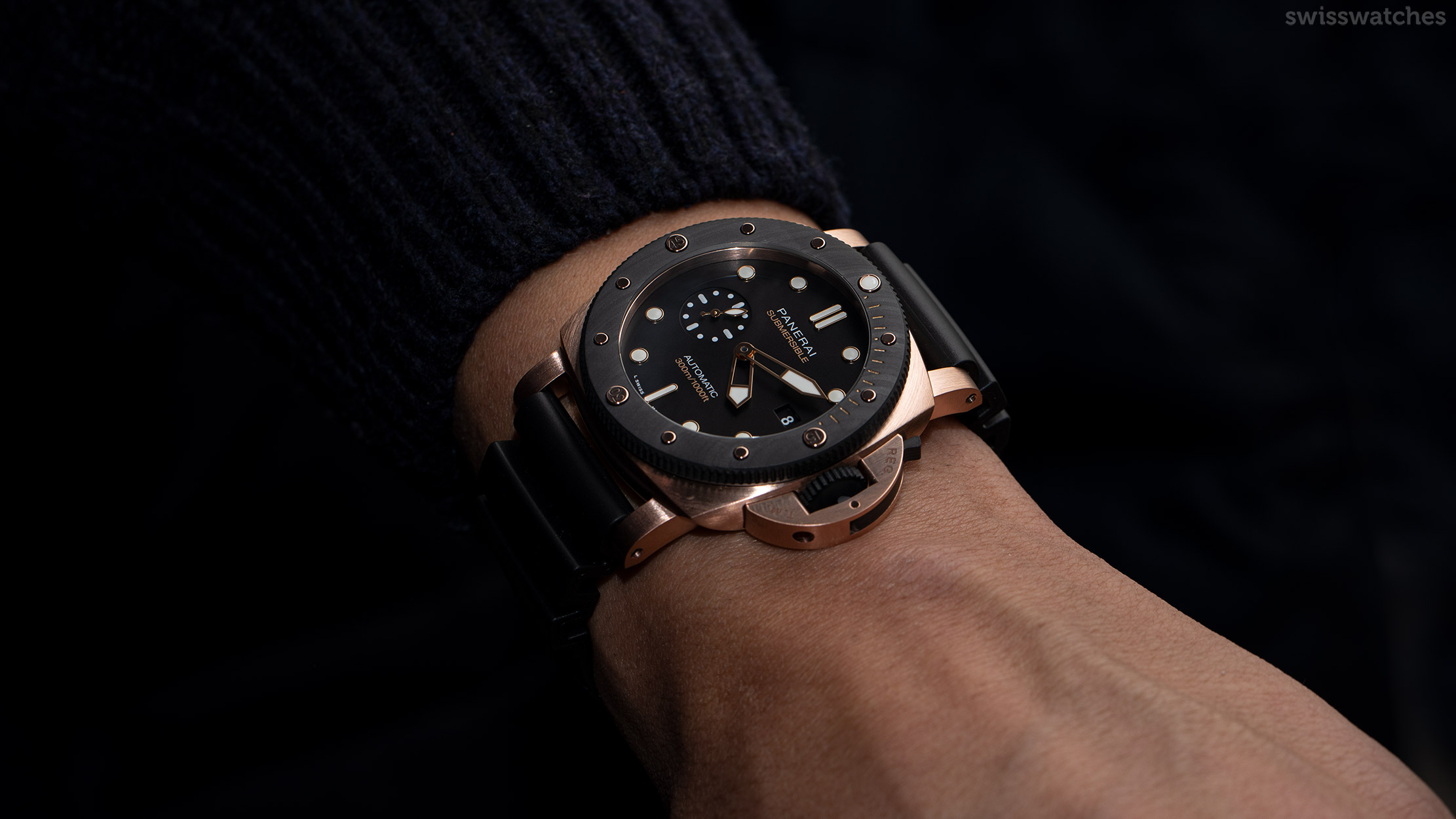
A Bold Combination: Panerai Submersible Goldtech Orocarbo – 44 mm – PAM01070
Florentine watch brand Panerai’s Submersible models first surfaced in the late 90s. For more than two decades, however, the timepiece overshadowing it was Panerai’s original diving watch, the Luminor. Since 2019, the Submersible has increasingly distinguished itself as a line in its own right. Now, for the first time, the new Submersible Goldtech Orocarbo PAM01070 combines two Panerai-developed materials into one watch: Goldtech and Carbotech.
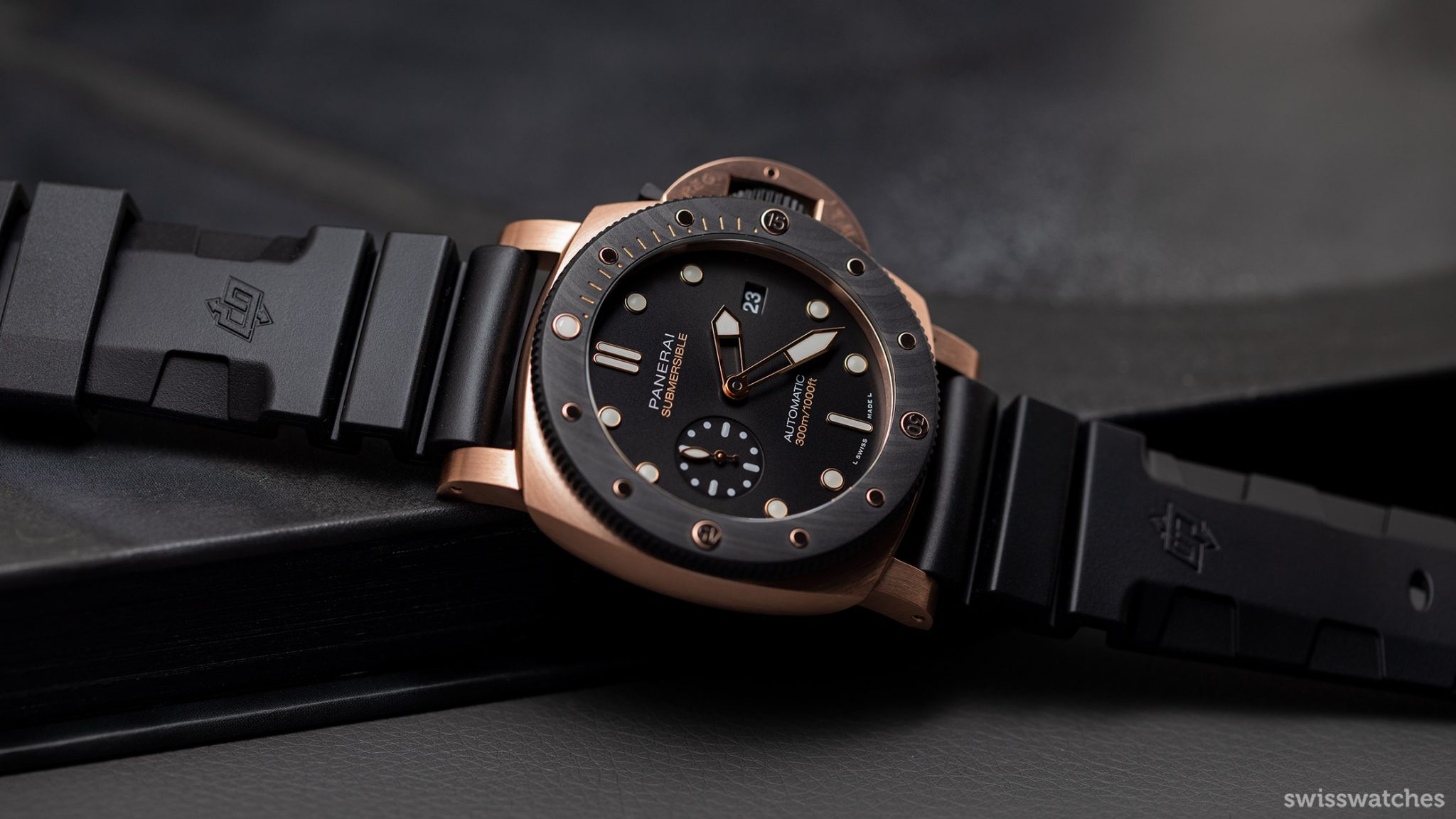
Submersible Goldtech Orocarbo PAM01070
Occupying the segment that some like to describe as “niche”, Panerai’s timepieces have an unusual aesthetic. However, such pieces have a decisive advantage; they have enormous recognition value, which some manufacturers painstakingly try to rebuild with the likes of heritage models and re-editions. Watch manufacturers such as Audemars Piguet (Royal Oak), Breitling (Navitimer), Jaeger-LeCoultre (Reverso) or Rolex (Submariner) have been able to establish icons over the past decades. However, the potential of such brands has arguably been reduced to these models over time, with part of their identity ultimately suffering as a result.
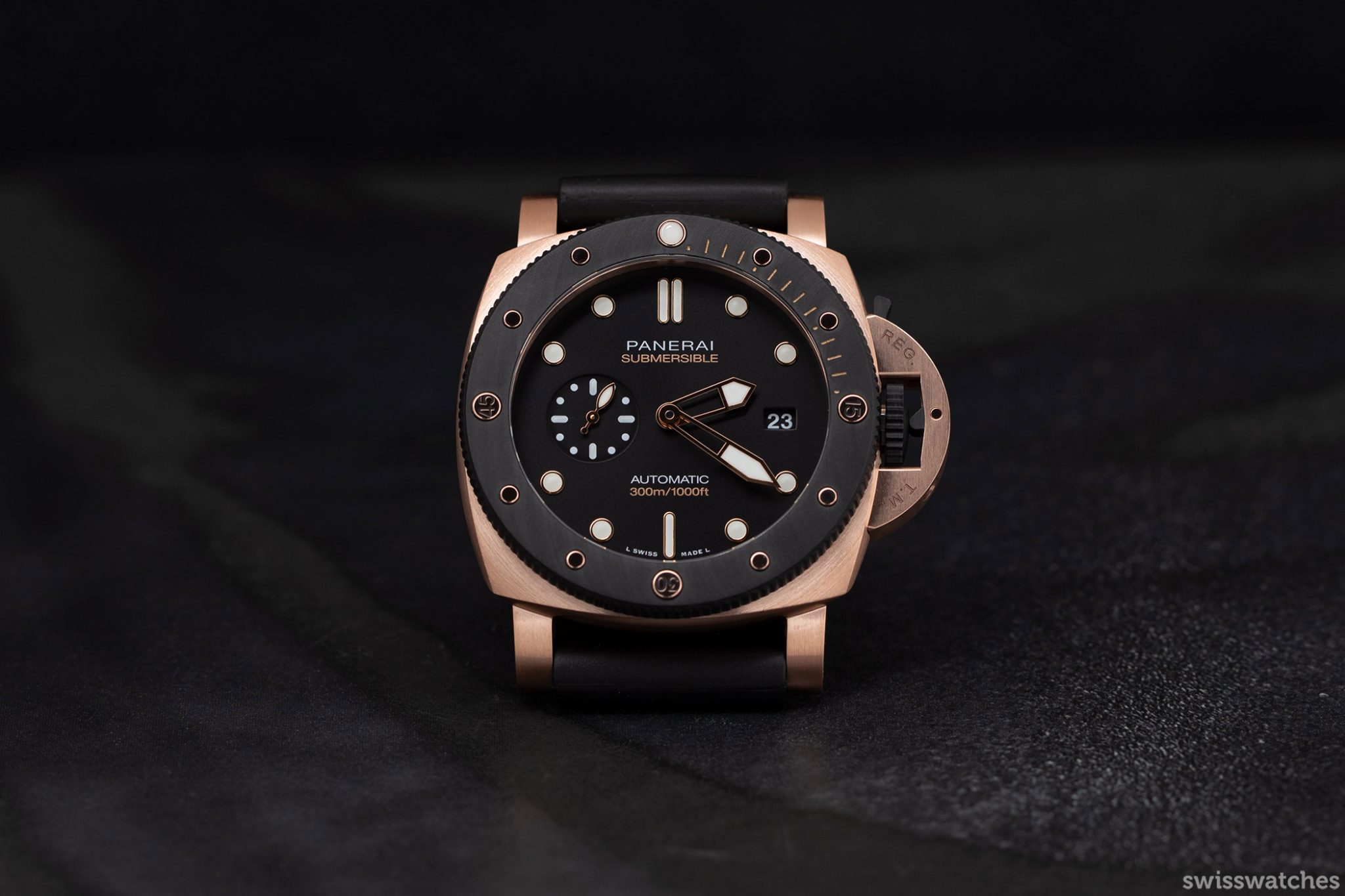
Meanwhile, the design of Panerai’s product portfolio remains virtually unchanged since the first tool watch (a product exclusively created for the Italian Navy in 1938) – excluding the horology house’s technical evolution, of course. But as consistent as Panerai is in its preservation of design codes, the Submersible also harbours contradiction for some fans of the brand. But why?
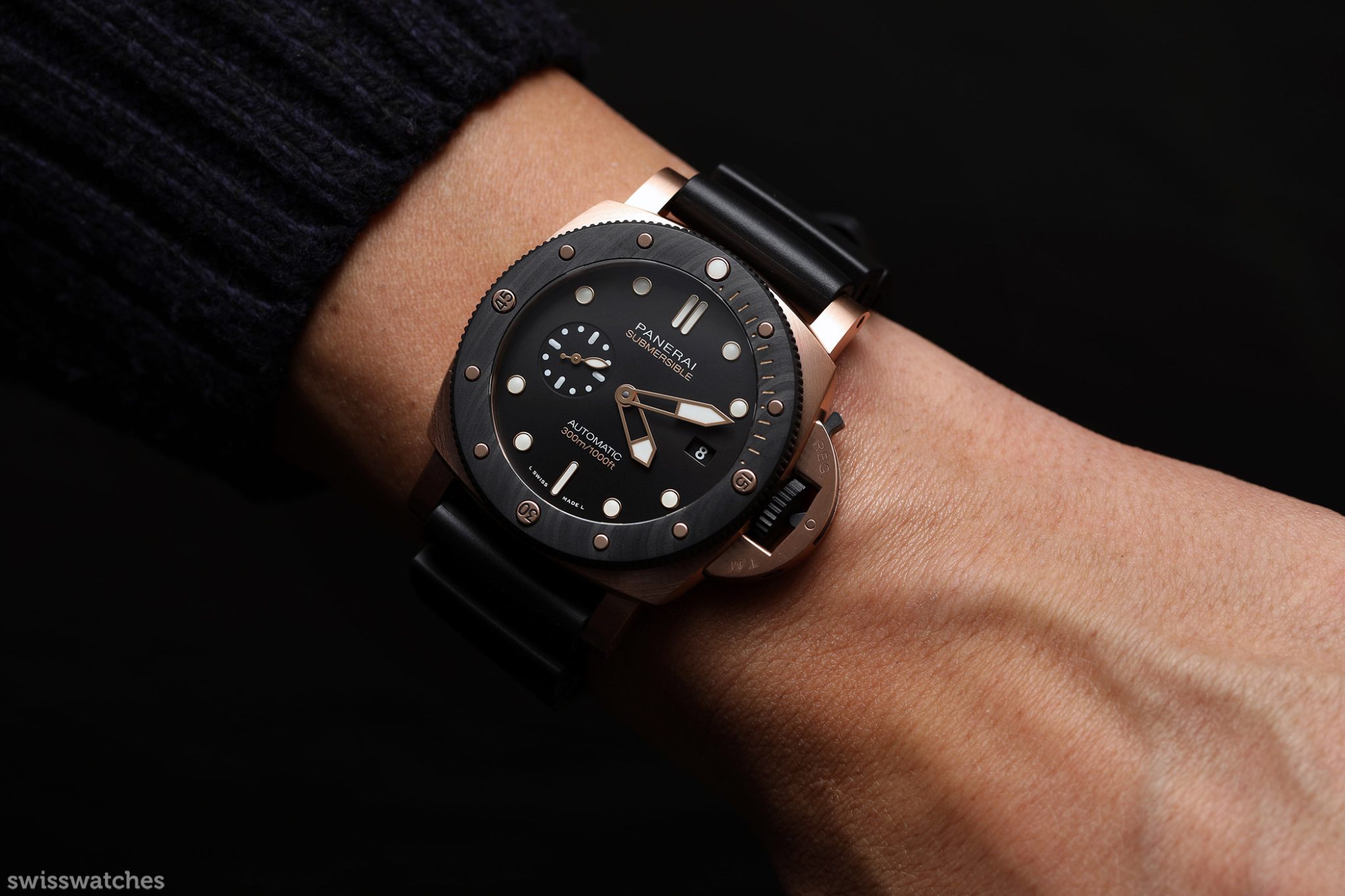
A daring combination
For a long time, Panerai watches were traditionally using stainless steel. During the past couple of years, Panerai’s creative team, led by CEO Jean-Marc Pontroué at the Laboratorio di Idee, has been keen to experiment with new materials. The most famous example is the Luminor Submersible Bronzo PAM0382 from the year 2011. Using bronze as a material for a diver’s watch is indeed plausible. For at least two years, now, Pontroué has been taking things a step further, using materials such as Carbotech, Fibratech, and Goldtech.
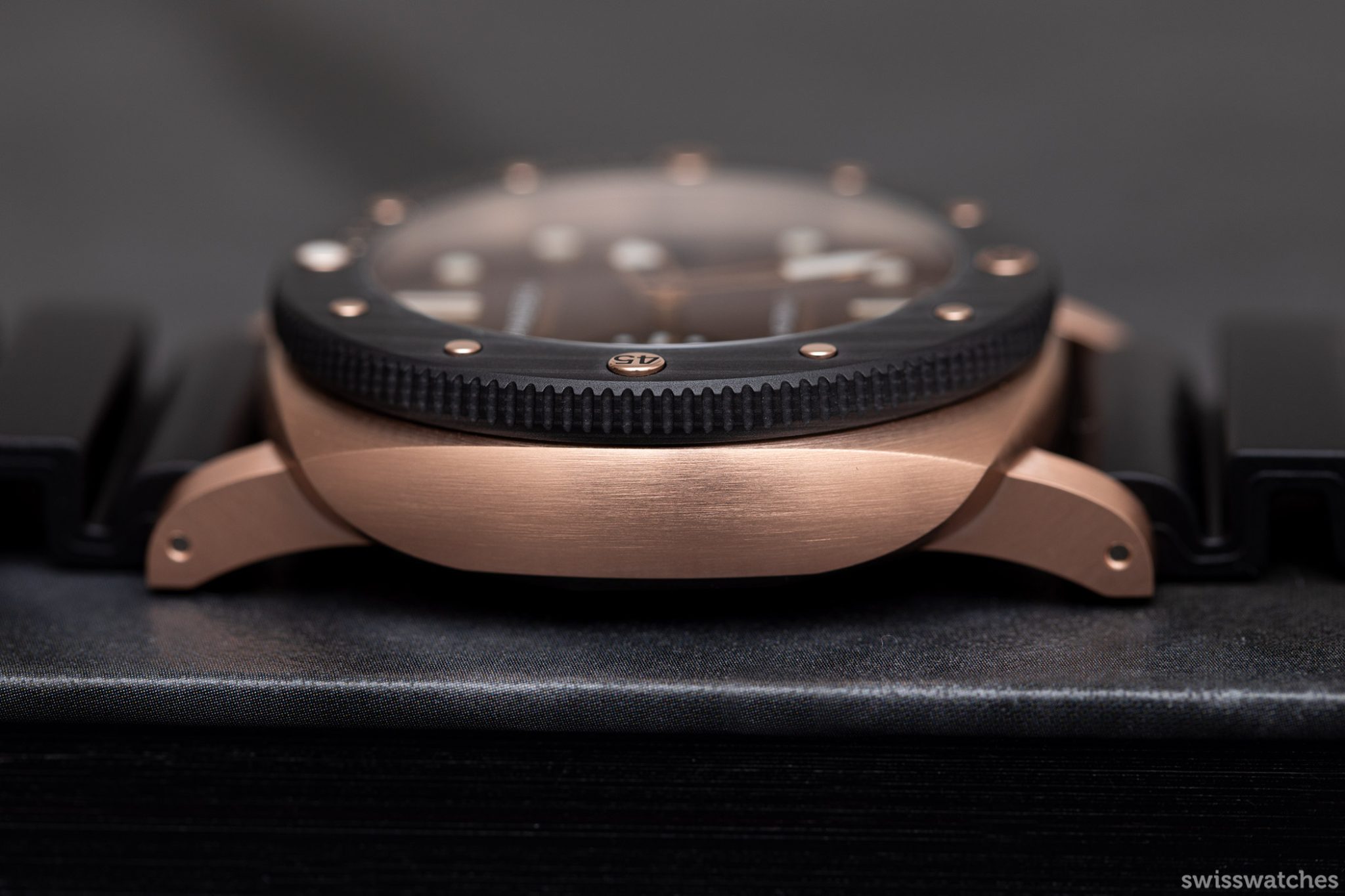
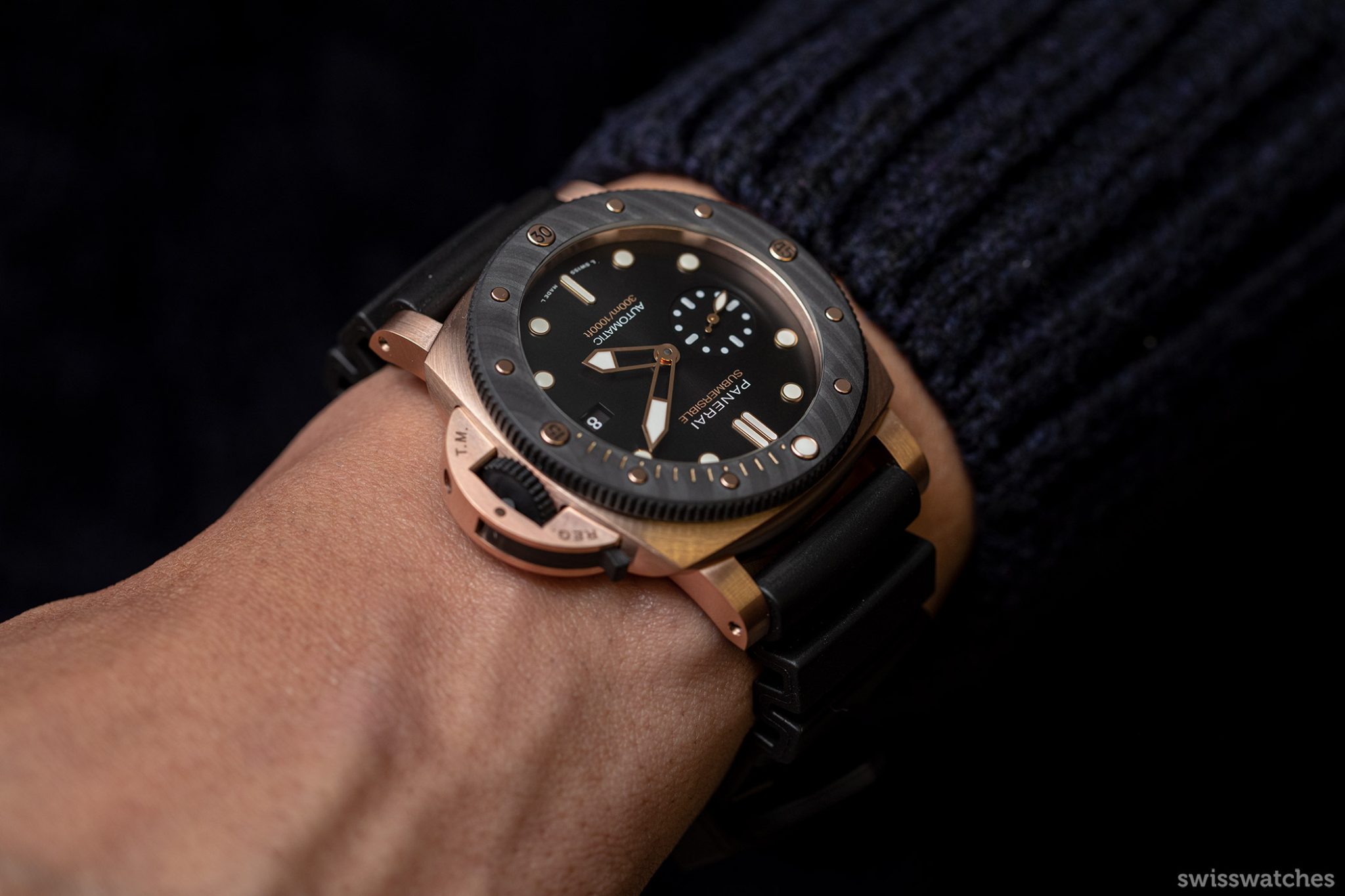
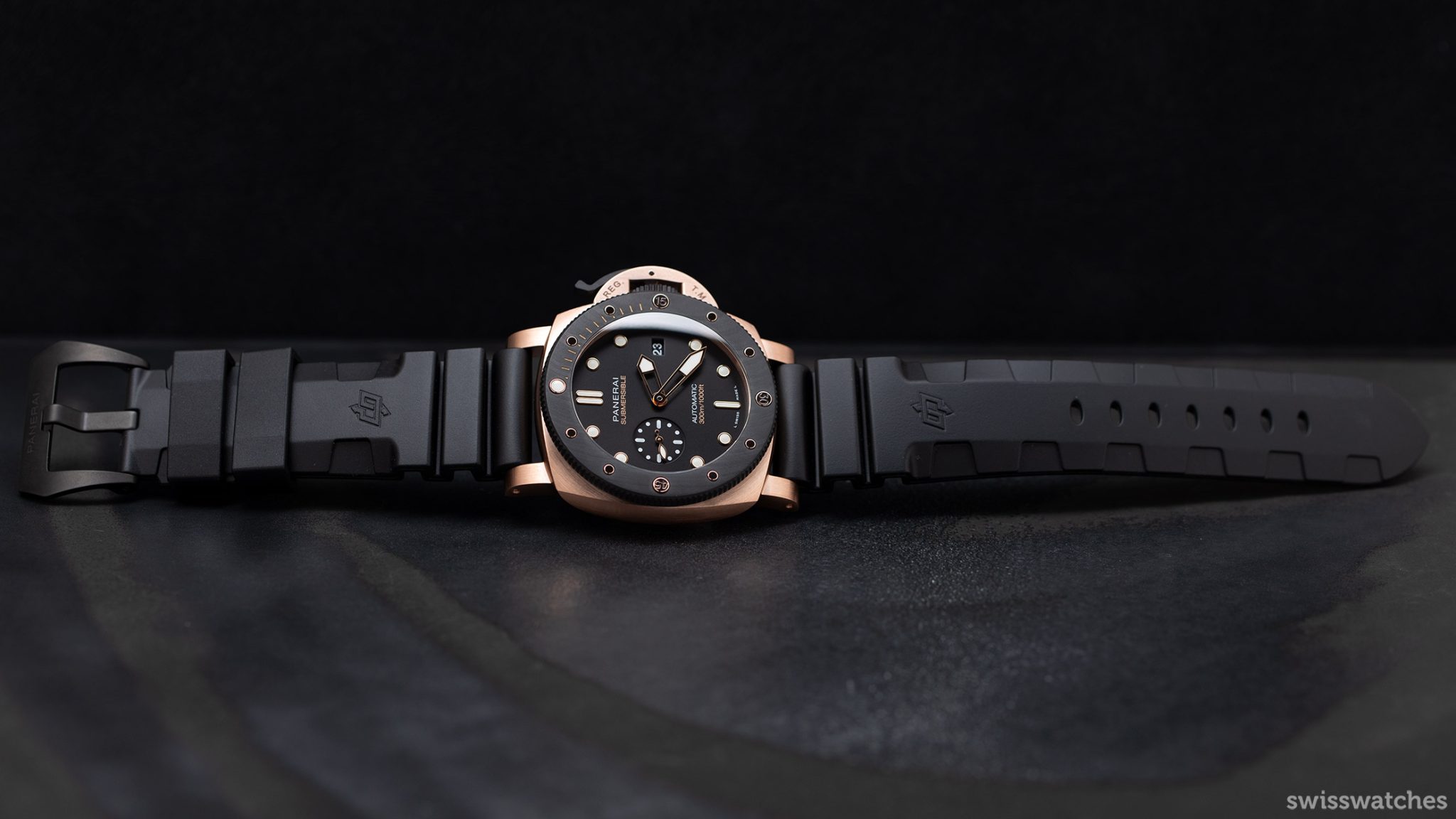
Thanks to its 70th anniversary, the Luminor collection has received a lot of attention in the past year. Yet the Submersible has also undergone a progressive and self-confident transformation in recent years. The Submersible was originally known under the name “Luminor Submersible”. Like the Luminor, it was designed to serve as a professional diver’s watch. However, it always tended to be somewhat rebellious and excessive, too. Its striking design alone radically sets it apart from the mother of all Panerai diving watches, the Luminor.
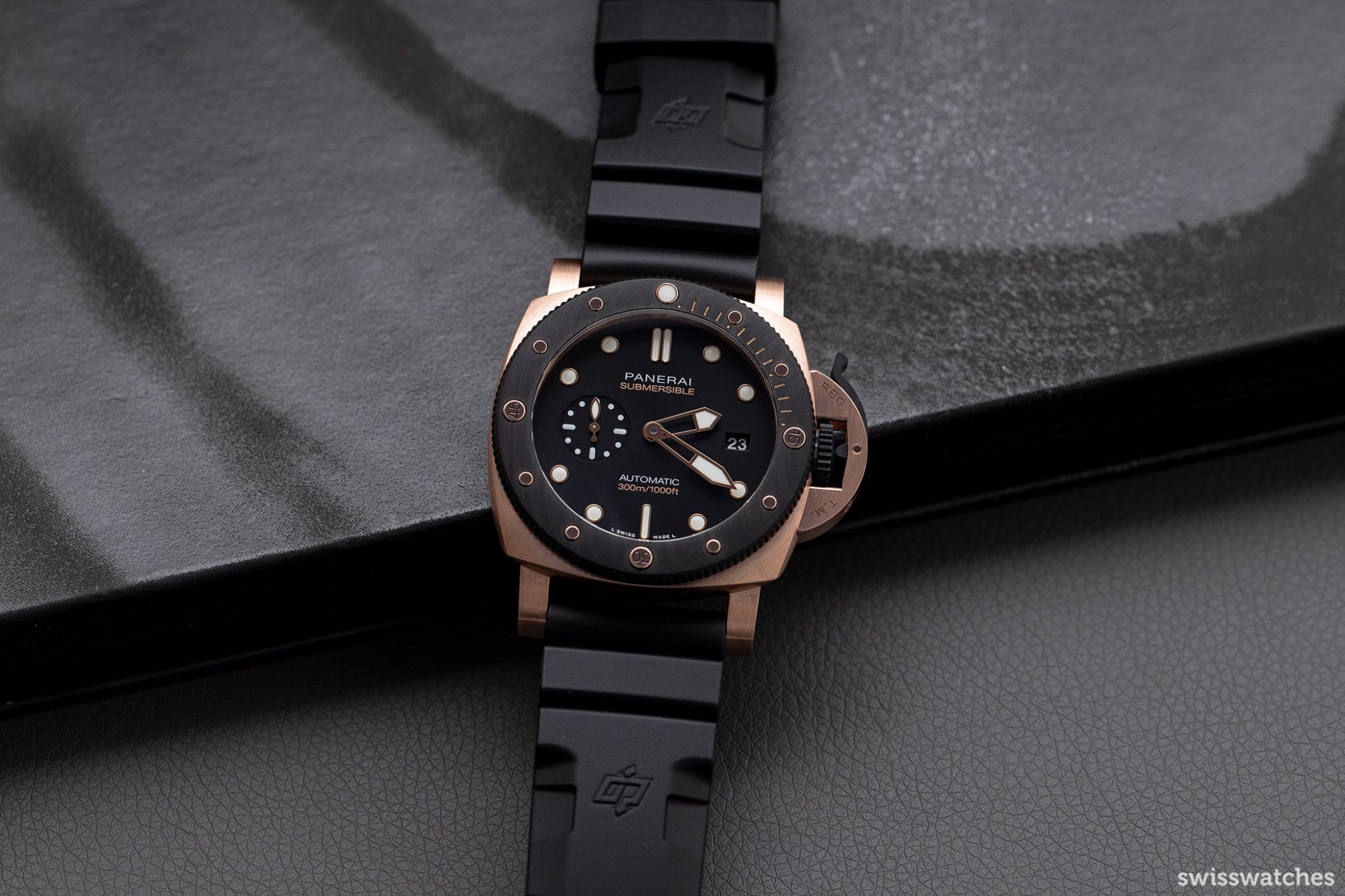
The Submersible as an autonomous collection
Following the taking over of Officine Panerai Firenze by the Vendome/Richemont Group in 1997, the Submersible first appeared on the market in 1998. However, it actually already made a brief guest appearance by 1995. The Slytech Luminor Submersible 5218-201/A was specially made for Hollywood actor Sylvester Stallone (Sly is Stallone’s nickname). Although never produced commercially, it appeared in his movie “Daylight” – primarily in the underwater scenes. This is quite possibly why it was christened the “Submersible“.
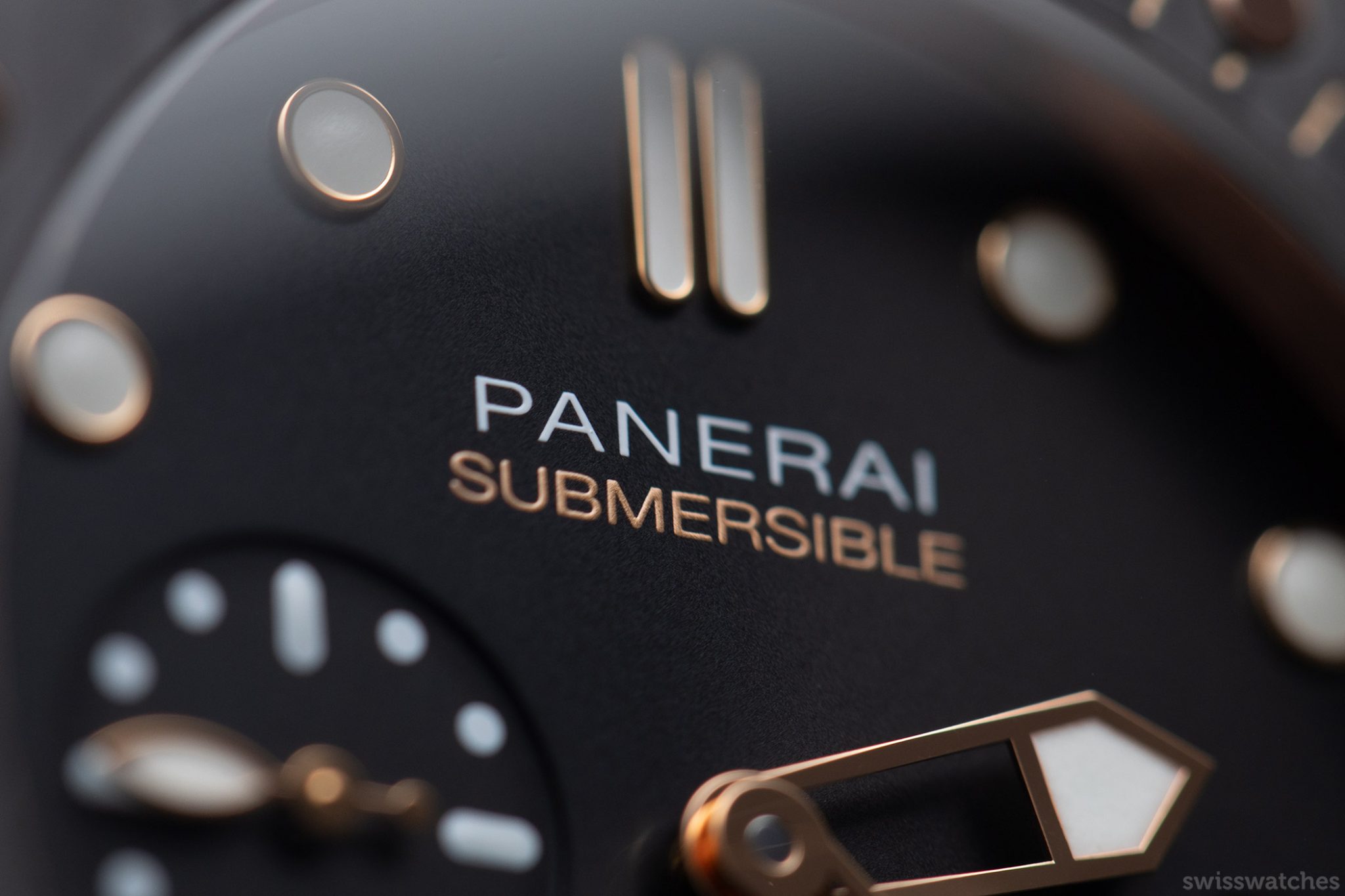
Aside from its brief excursion into the world of cinema, the true story of the (Luminor) Submersible began with the Reference PAM00024 Luminor Submersible Automatic 44mm in 1998. From then onwards, it gained a unidirectional rotating bezel, thus decisively standing out from Panerai’s Luminor and Radiomir models. In 2019, the Submersible consequently fully separated itself from the Luminor, becoming an autonomous collection in its own right.
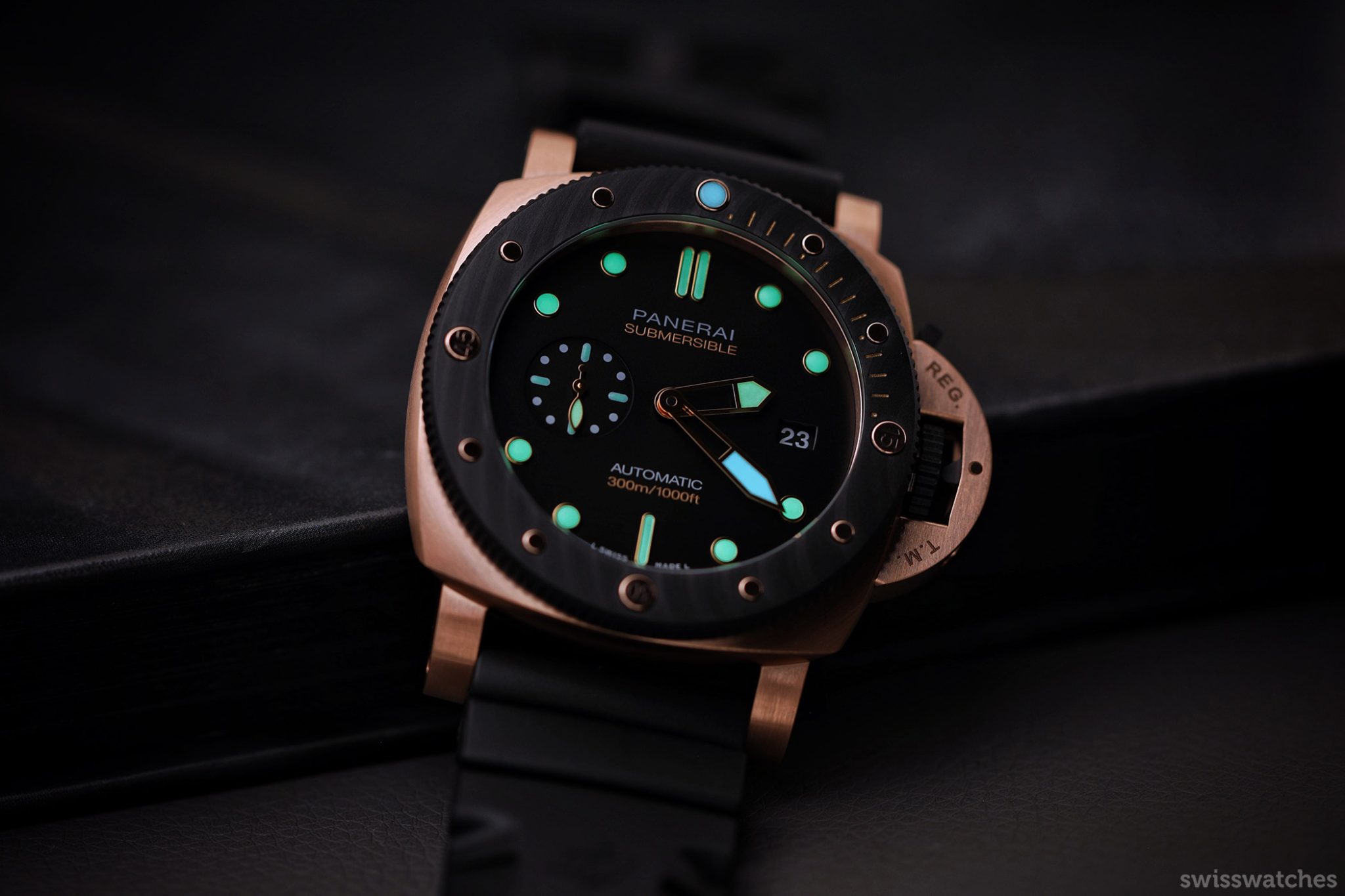
Pointer tips and hour markers glow bright green
The latest twist – the Submersible Goldtech Orocarbo 44 mm PAM01070
For the first time ever, Panerai are now combining a precious metal and high-tech composite material in a single watch. The watch they’ve chosen to receive this? A Submersible. The case of the new Submersible Goldtech Orocarbo PAM01070 uses the material Goldtech. This alloy is one we are already familiar with, having seen it in the Luminor Marina Militare PAM01112. By contrast, the distinctive bezel uses Carbotech. Carbotech is already in use in a diverse range of models (e.g. the PAM01118, PAM01661, and PAM00960). However, up until now, gold had never been combined with it.

Goldtech is one of Panerai’s own alloys. It consists of about 75% 18-carat gold and 25% copper and platinum. This creates an intense colour, which I would personally describe as a warm yellow gold. Meanwhile, Carbotech is a high-performance alloy that uses carbon fibre. The wave-like structure forms through the overlapping of the layers in opposing directions at a controlled temperature and under high pressure, before finally merging together with a polymer binder. The black dial features very subtle sunray decoration, which one might miss unless carefully expecting the dial. Both in the metal and in our photos, the dial rather looks matte. Finally, the hands and the applied indices are also Goldtech. Meanwhile the bezel, the crown, and the crown guards are made of Carbotech.
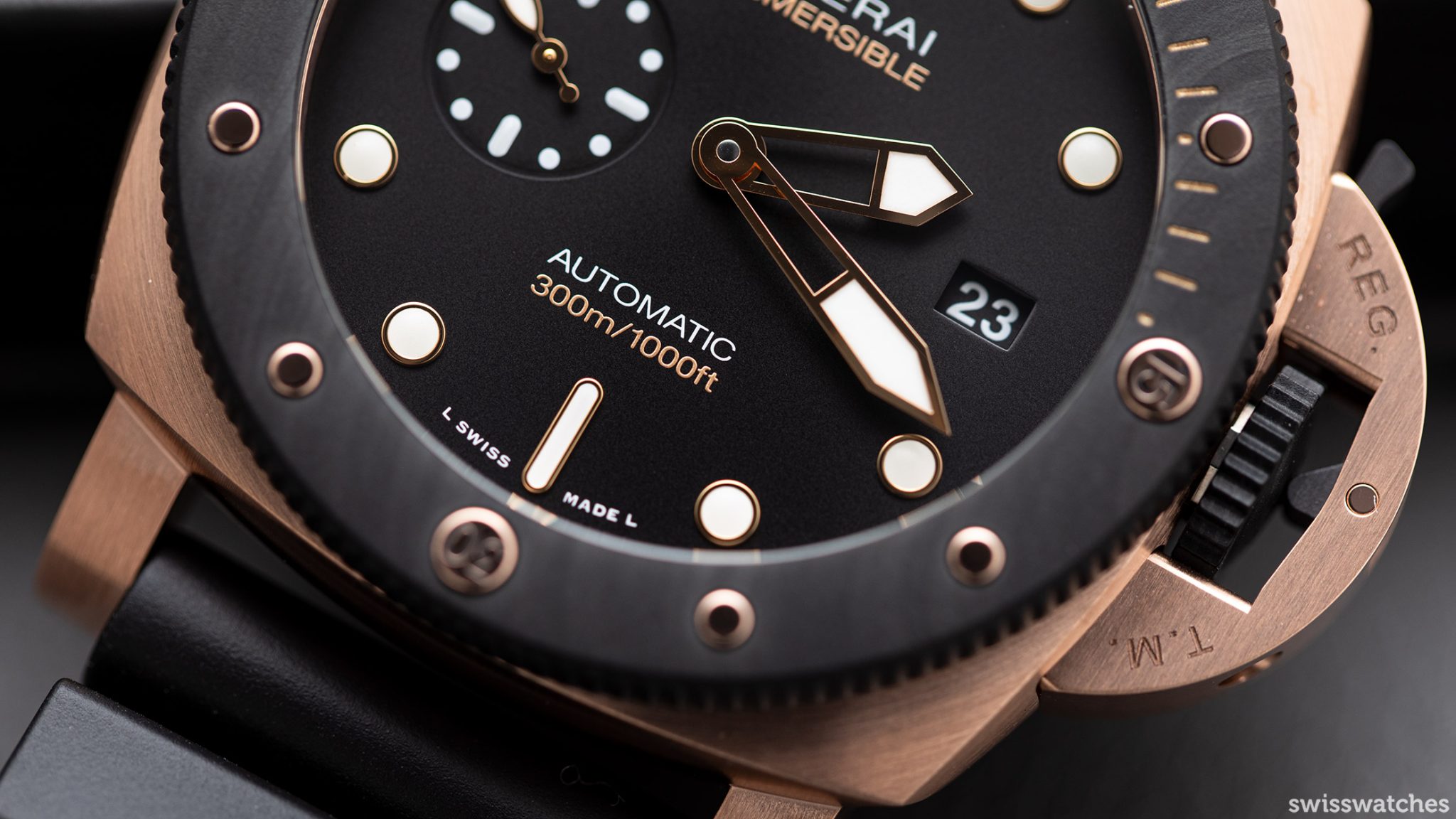
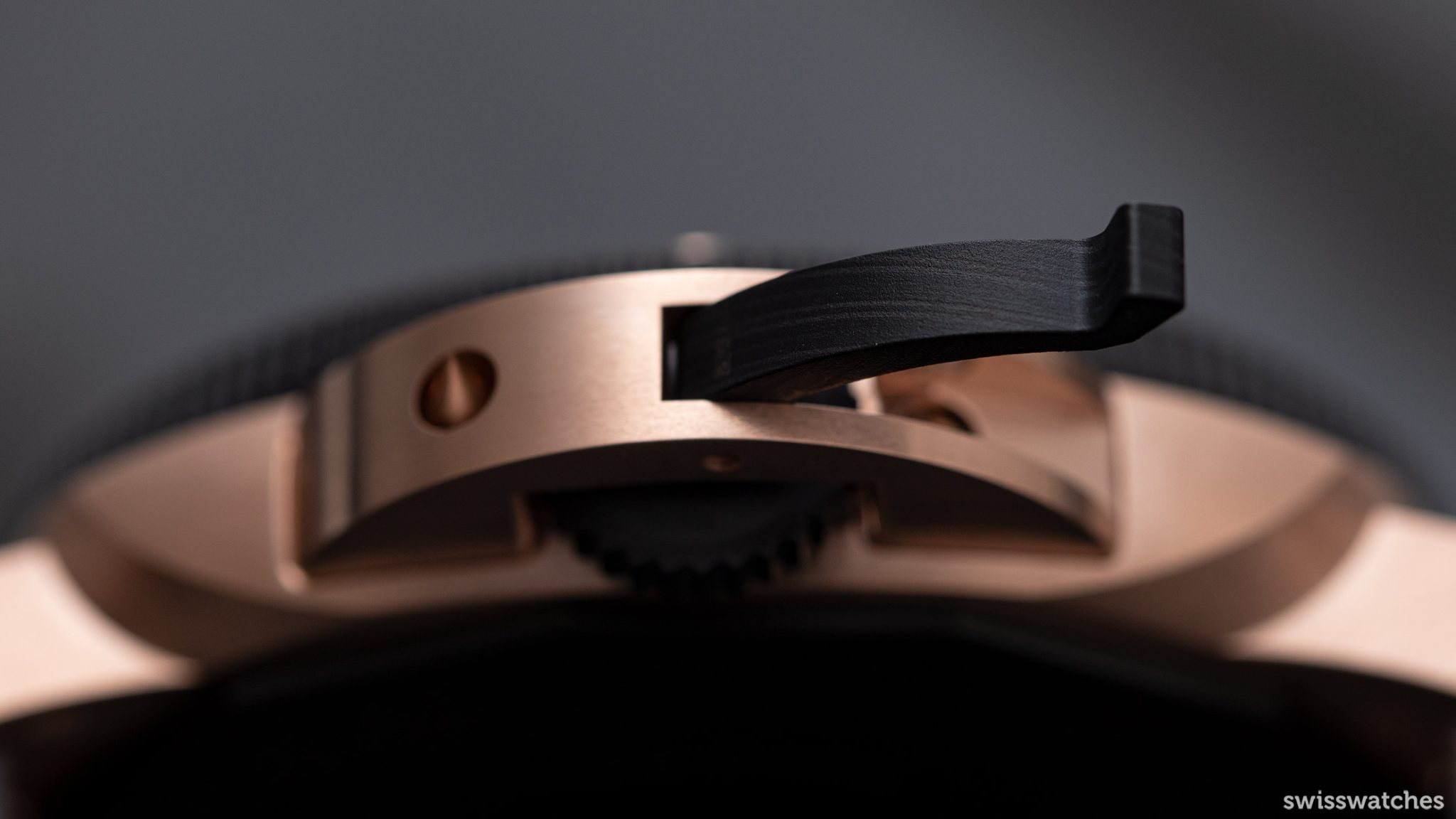
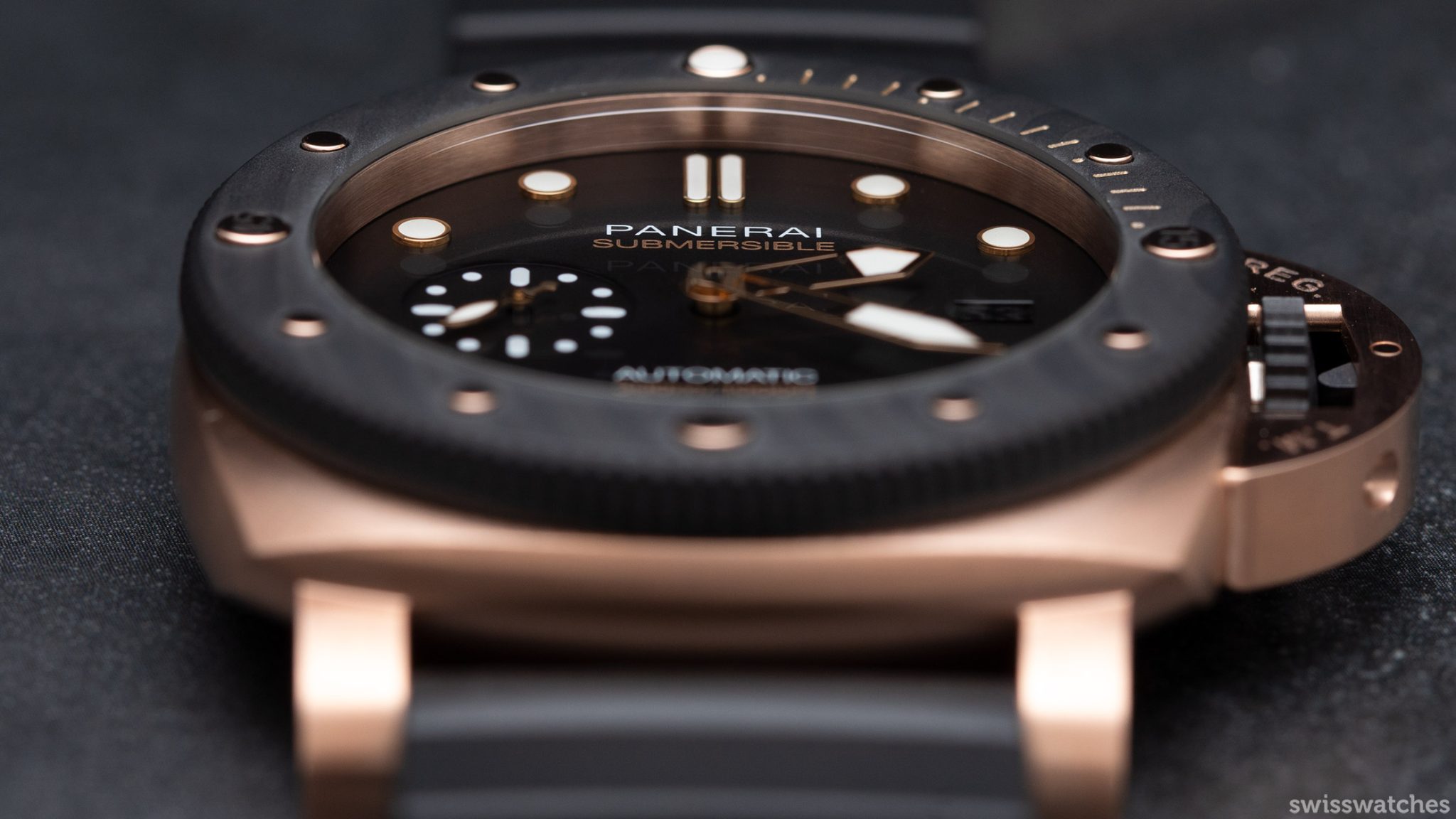
Is the PAM01070 still a diver’s watch?
Some people will question whether the watch is still a diver’s watch, or rather a piece of jewellery? Despite a chic aesthetic, the watch still proves to be “submersible” with a water-resistant up to 300 m – not least due to its unidirectional rotating bezel and the screw-down titanium caseback. Whoever is ready to give out almost 30,000 euros for a watch is most likely not just simply shopping for a diver’s watch. Likewise, they are probably not just looking for a chic watch. Rather, they have an interest in tradition, as well as niche watches which draw attention. The fact that Panerai nevertheless first and foremost ensures that its watch follows the requirements of a diver’s watch is evident. However, whether the wearer actually needs to use these functions is not a determining factor. It’s about combining tradition and innovation to avoid stagnation, that’s legitimate, even inevitable.
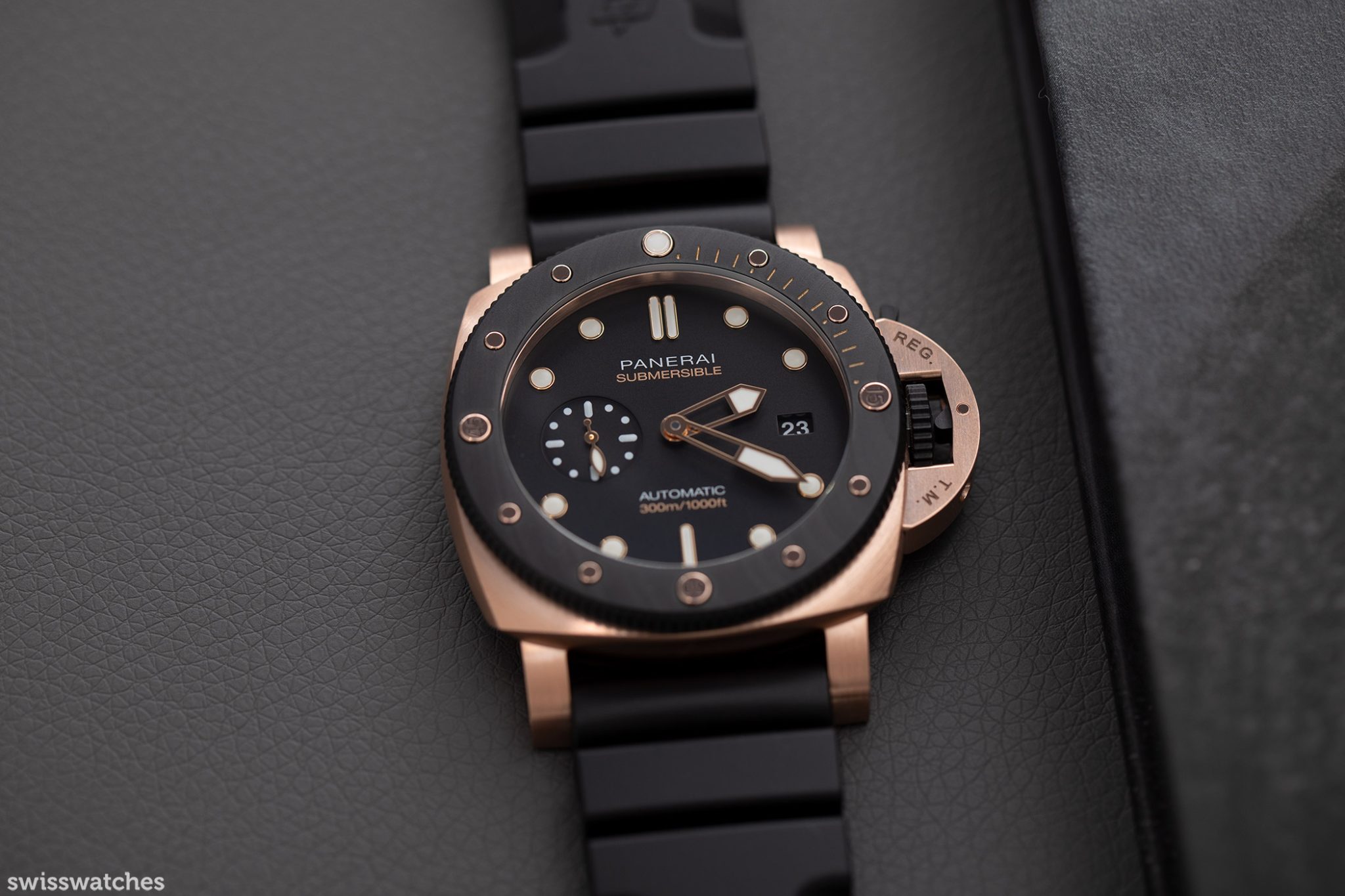
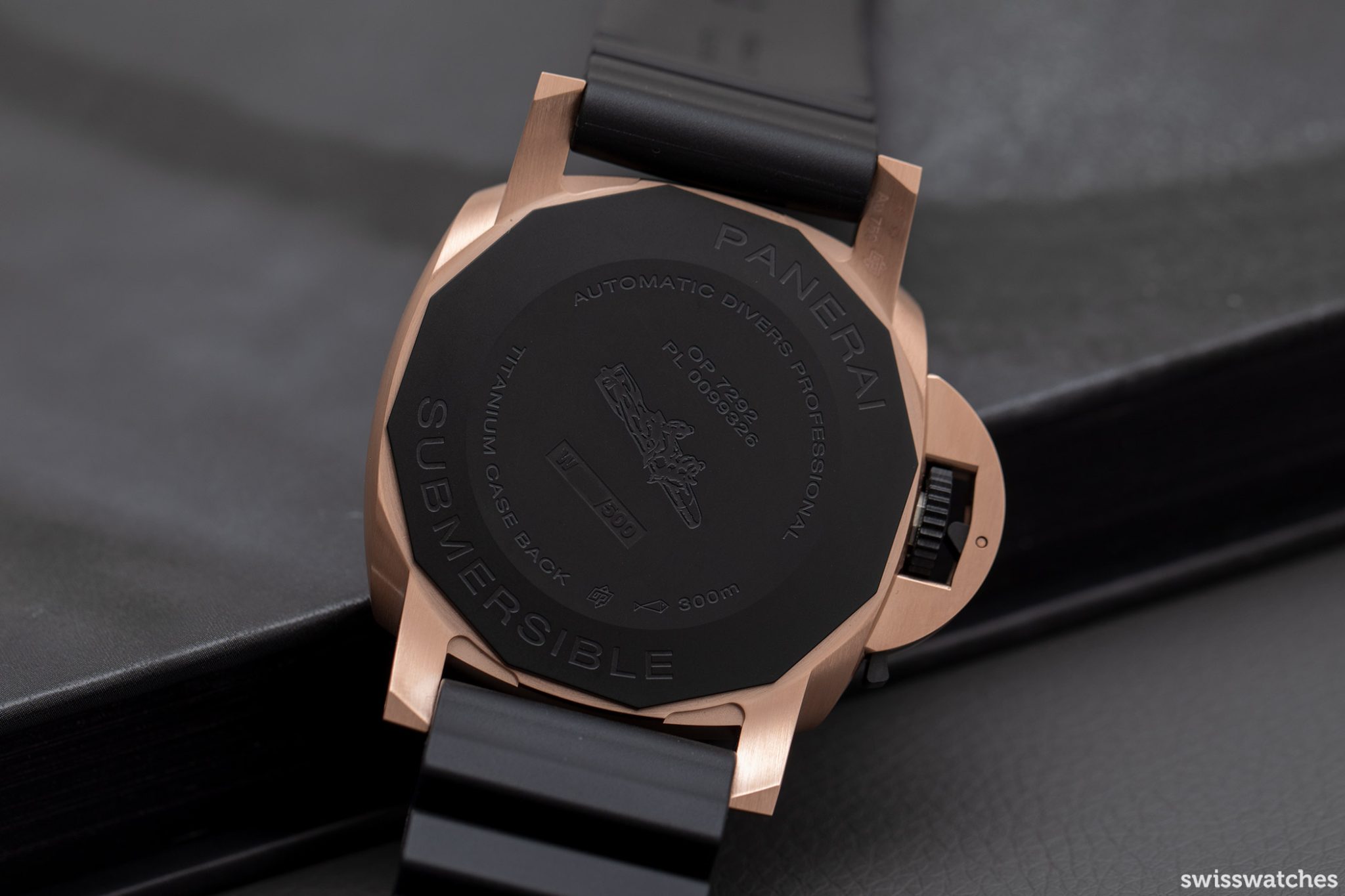

One thing that interests every mechanical watch enthusiast is the matter of which movement is ticking away inside. In the case of the Submersible Goldtech Orocarbo, the answer is the tried-and-tested calibre P.900 with automatic winding, modified in-house by Panerai. As well as hours, minutes and small seconds, it provides a date window at 3 o’clock. Furthermore, it has a power reserve of three days (72 hours). Interestingly, the movement, measuring 4.2 mm, is incredibly thin. Meanwhile, the diameter of the case is 44 mm, with a height of 13.35 mm.
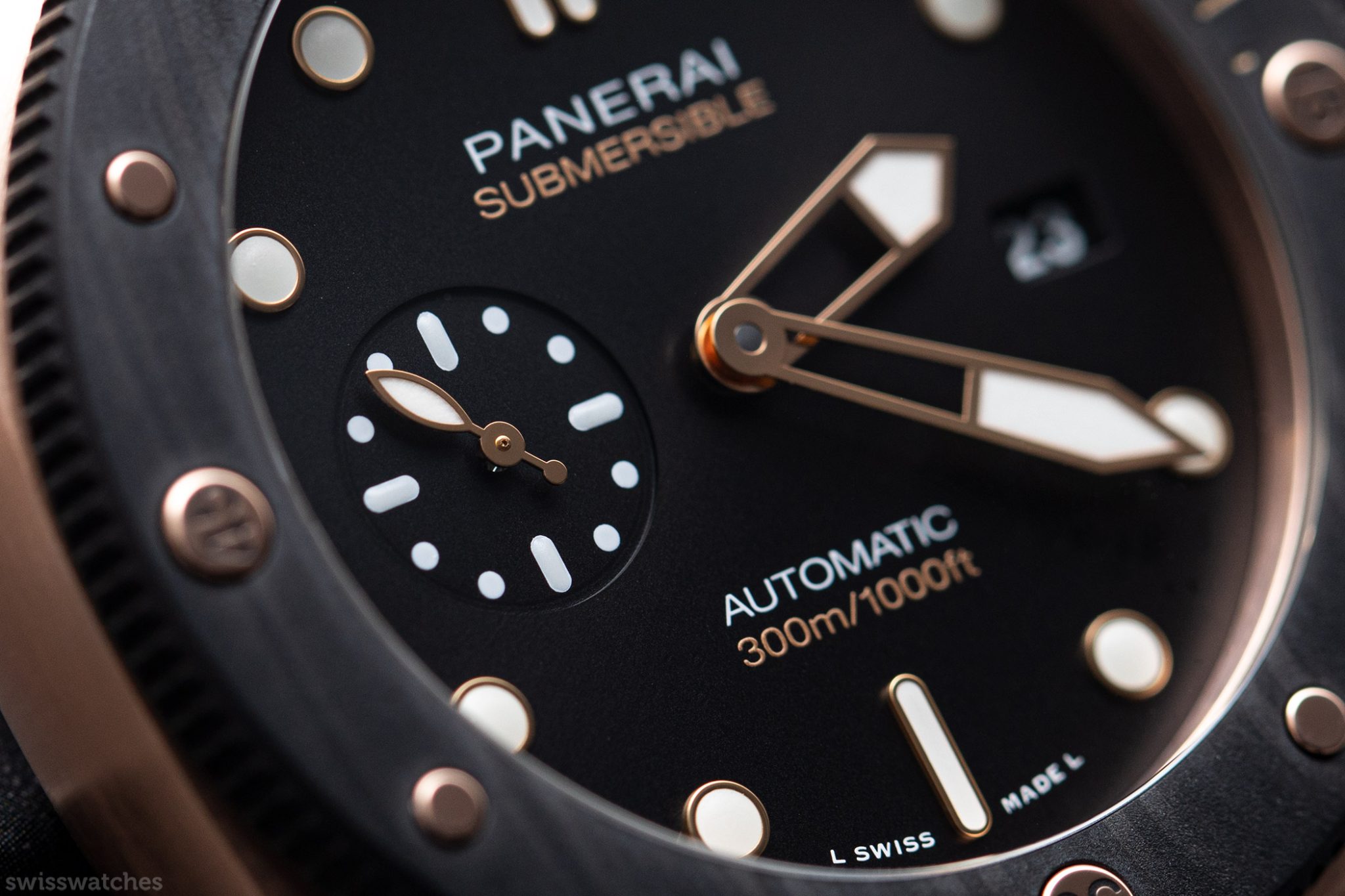
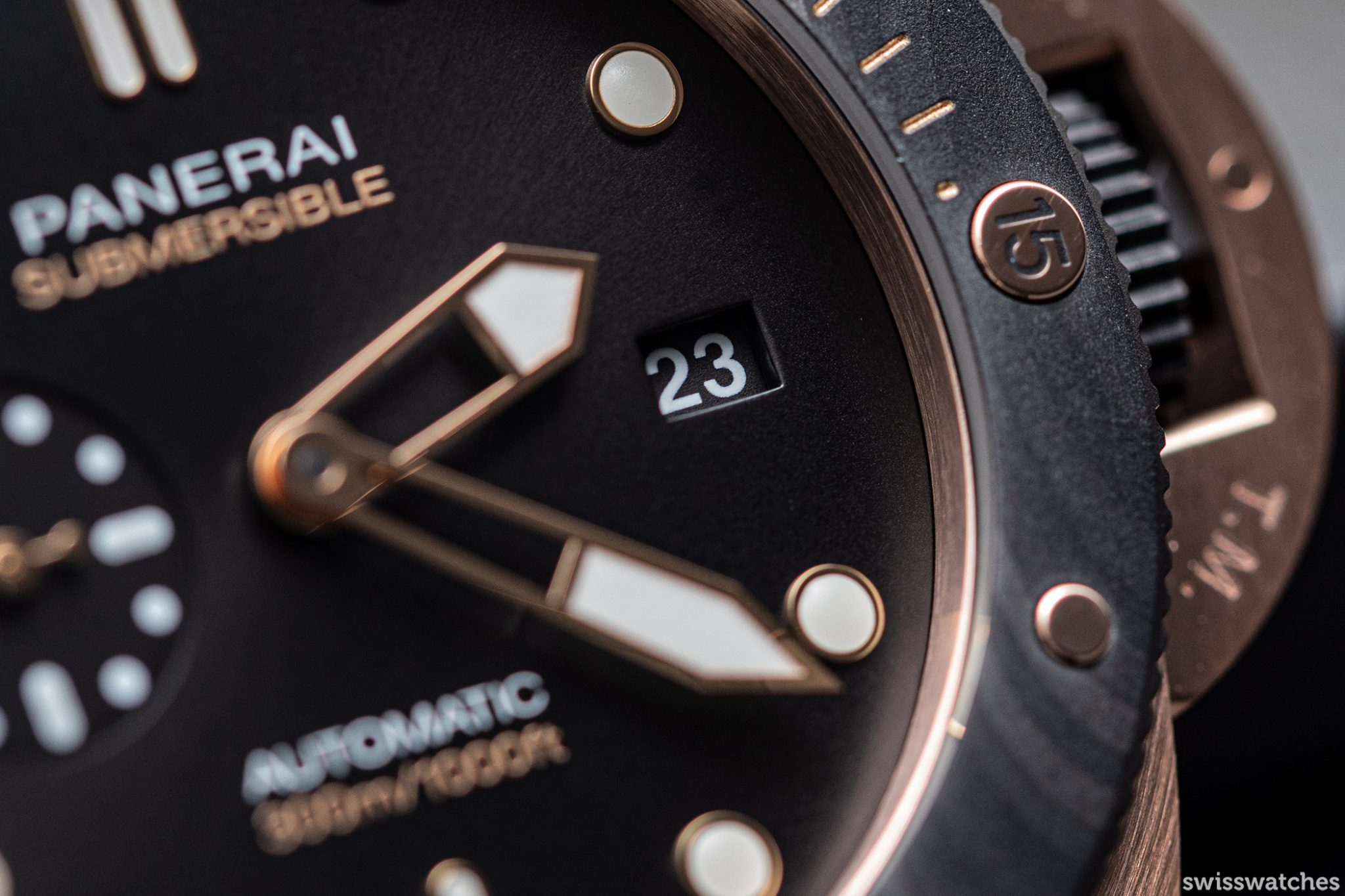
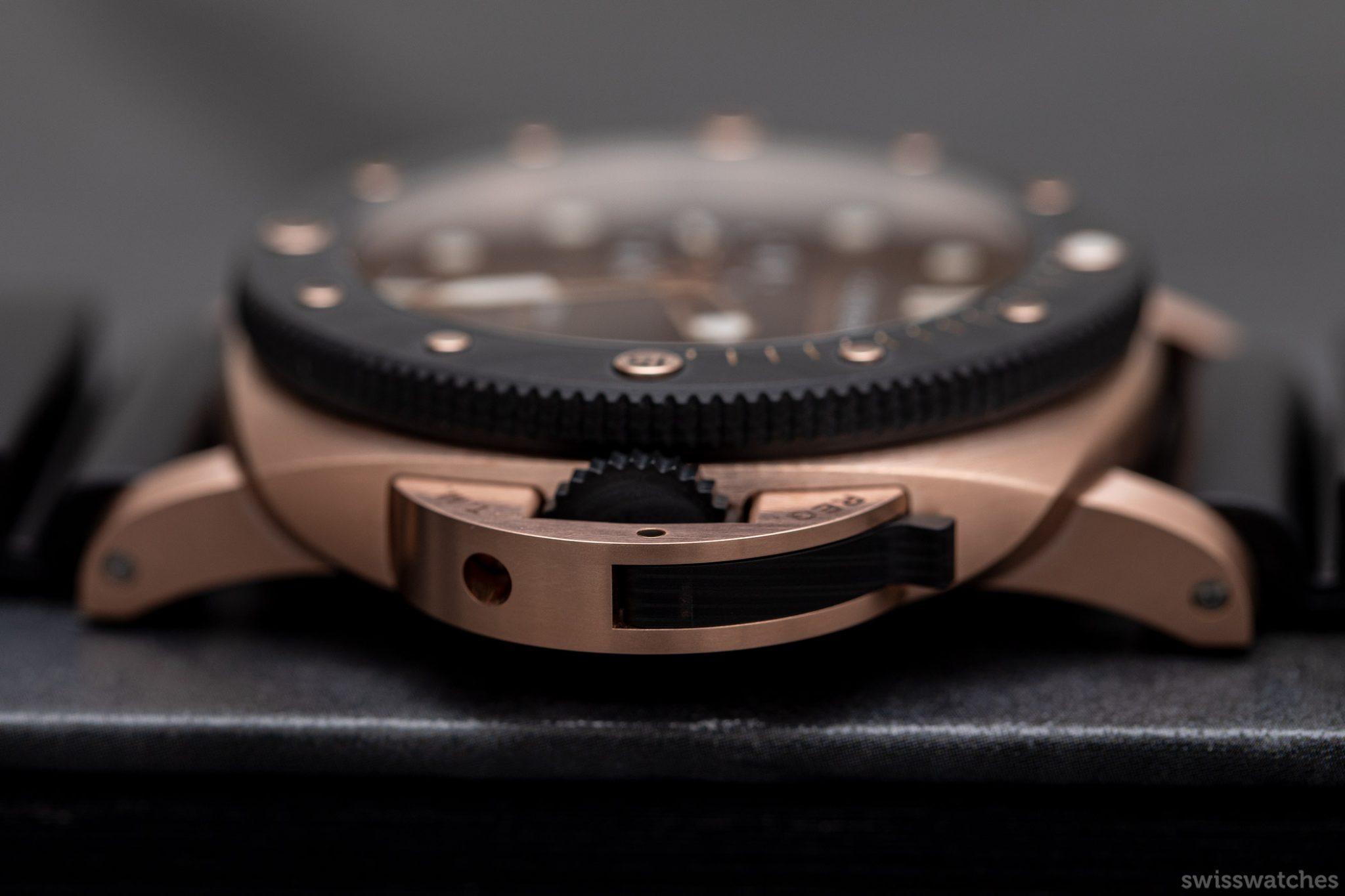
44 mm case diameter with a height of 13.35 mm
Consistent or contradictory?
With the introduction of the Submersible Goldtech Orocarbo, has Panerai succeeded in continuing the idea of melding together the unusual combination of innovation and tradition? Or is the aforementioned contradiction justified, to risk the strong recognition value with this strategy? Delving into Panerai’s history books, you will find that even in the early years Panerai saw itself as a “workshop of ideas”, coming up with many innovative approaches to help improve tool watches for the military.
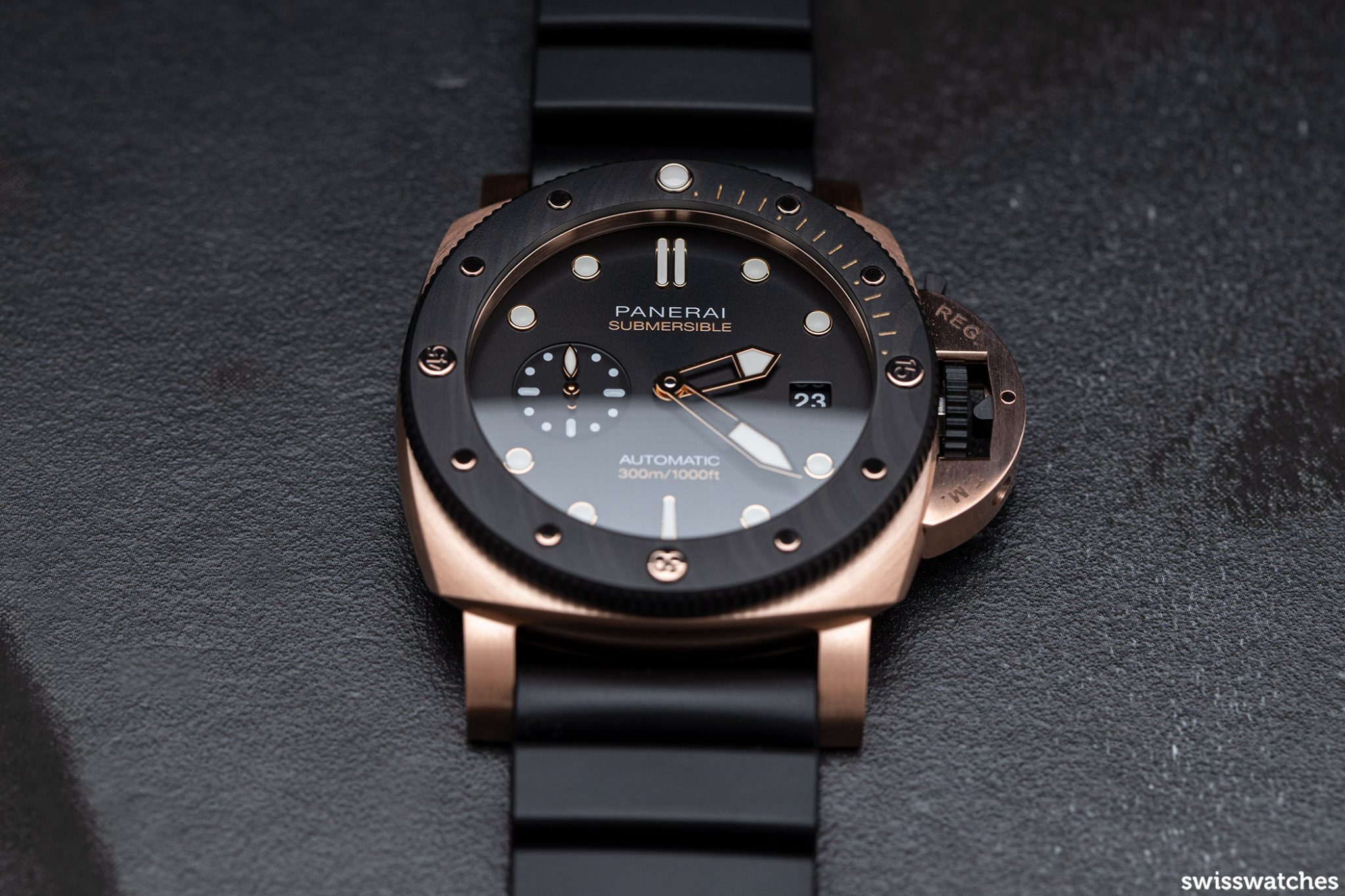
Likewise, Panerai was experimenting with new materials pretty early on. Even by 1988, former CEO Dino Zei had developed a model with a titanium case. Titanium is of course corrosion-resistant, thus making it ideal for diver’s watches. Because diver’s watches today aren’t simply for use by divers, the use of new, not necessarily purely deep sea-orientated alloys are also now acceptable. In this sense, Carbotech and Fibratech are consequently the product of the continuation and technical evolution taken from stainless steel and titanium. Hence, the Laboratorio di Idee is the “workshop of ideas” of the 21st century. That is something that probably wouldn’t have been seen any differently by Dino Zei.
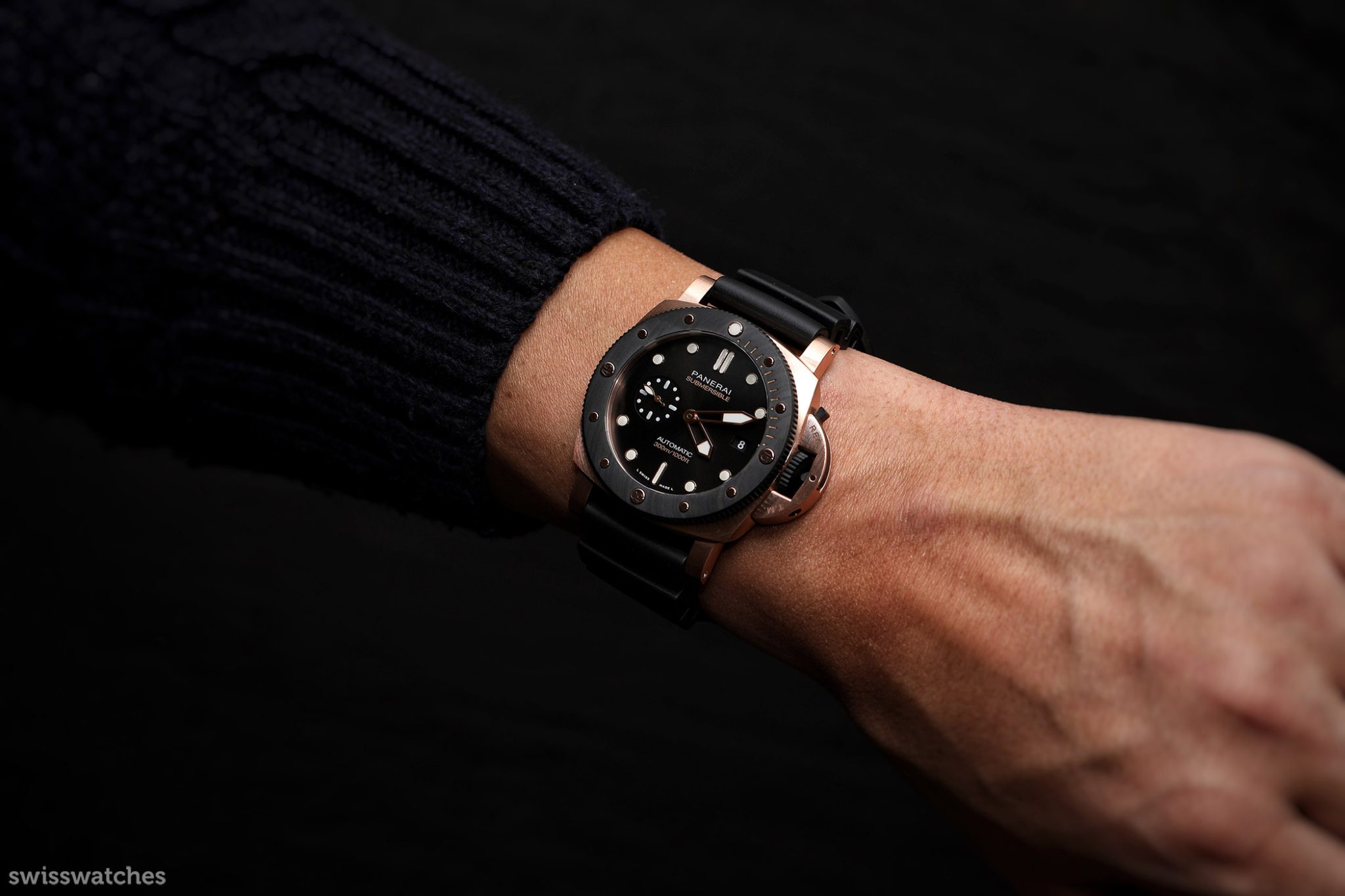
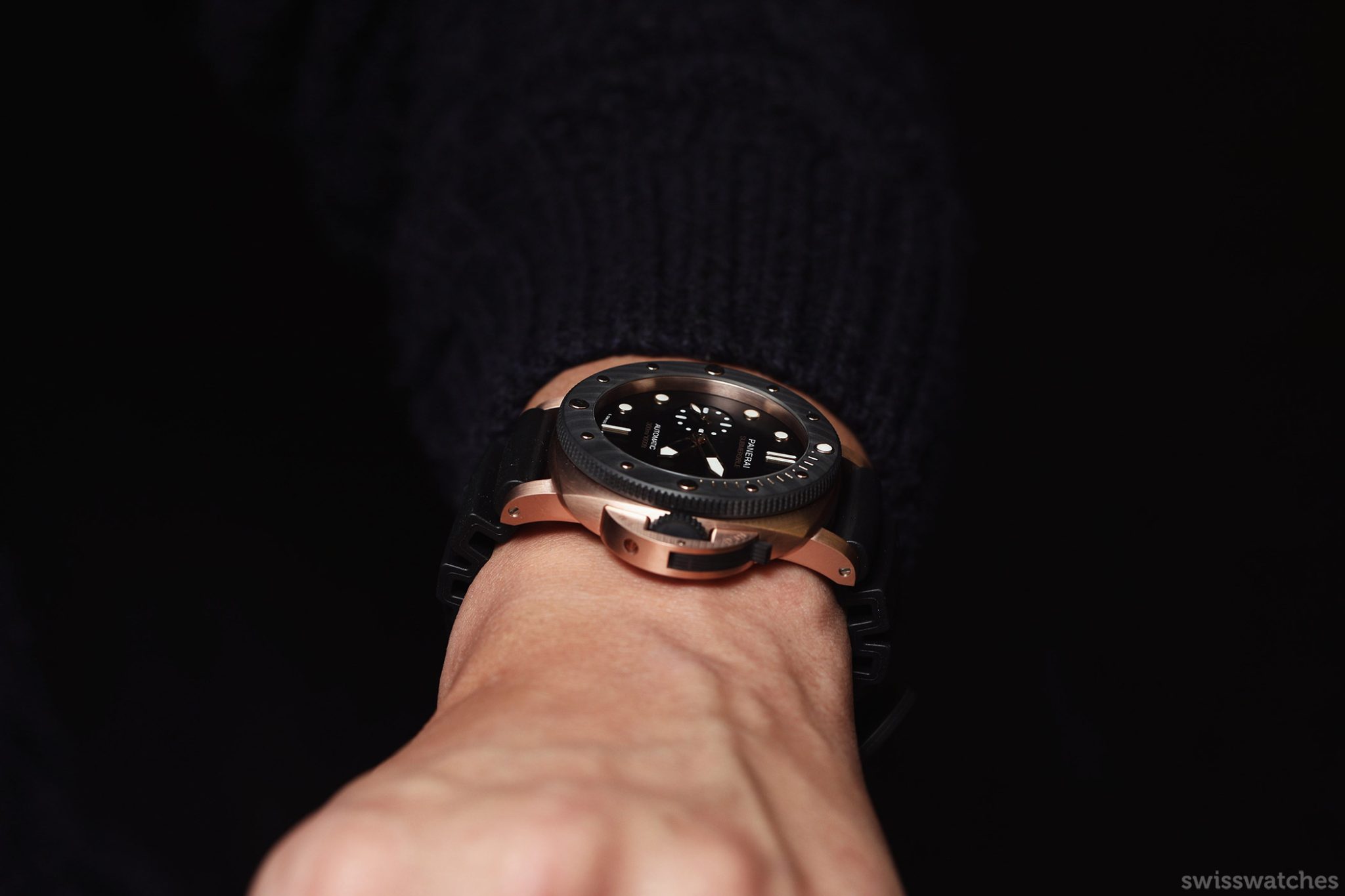
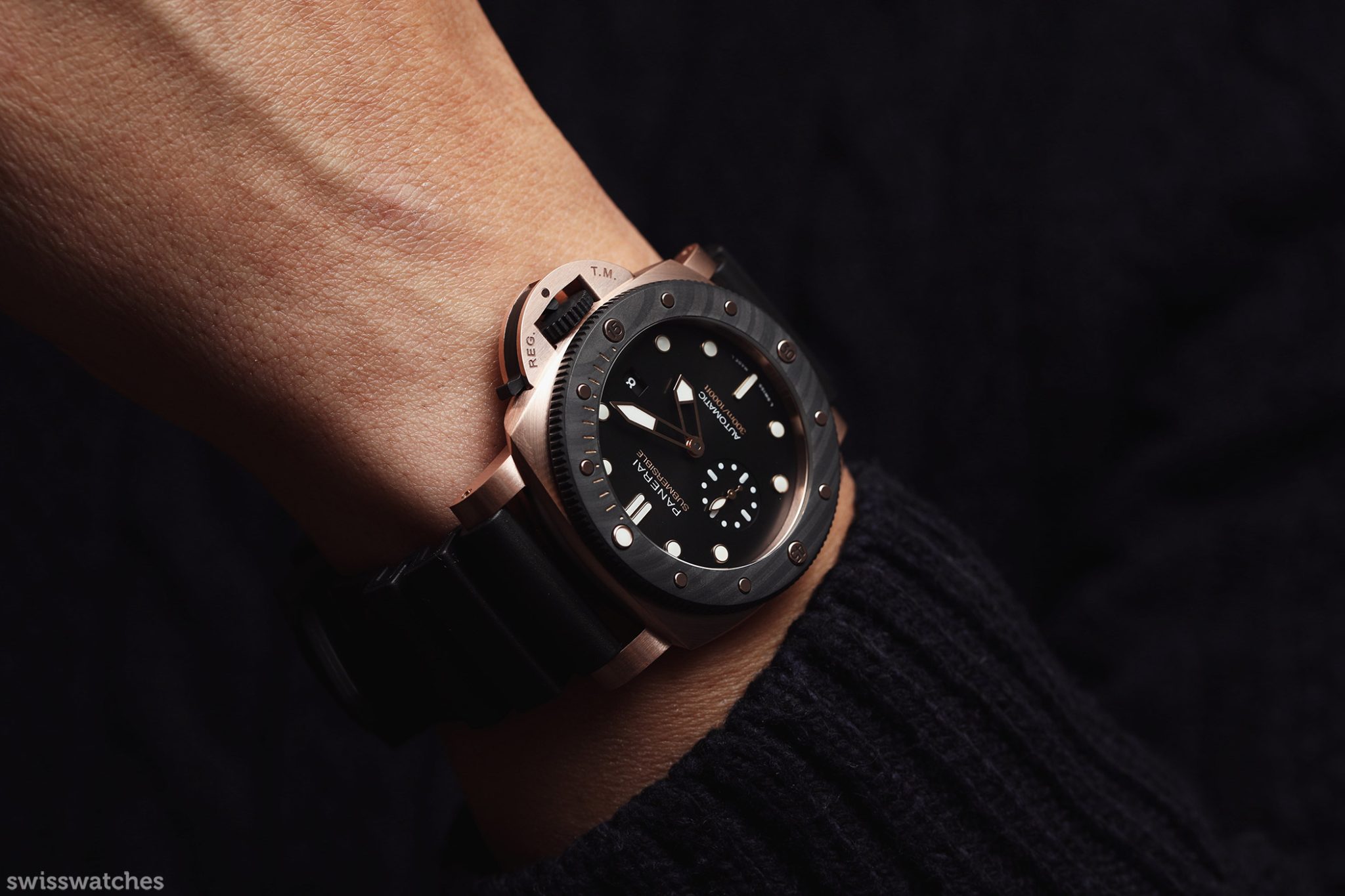
The new Submersible Goldtech Orocarbo comes on a black rubber strap with a pin buckle (made out of black DLC-covered titanium). The watch comes with with a second strap, made out of black Panerai Sportech (including a special screwdriver for removing the clasp). Meanwhile, the box’s material uses recycled plastic; further evidence of the contemporary evolution taking place in the 21st century. Price: 29,900 euros.
FEATURES
Case height: 13,35 mm
